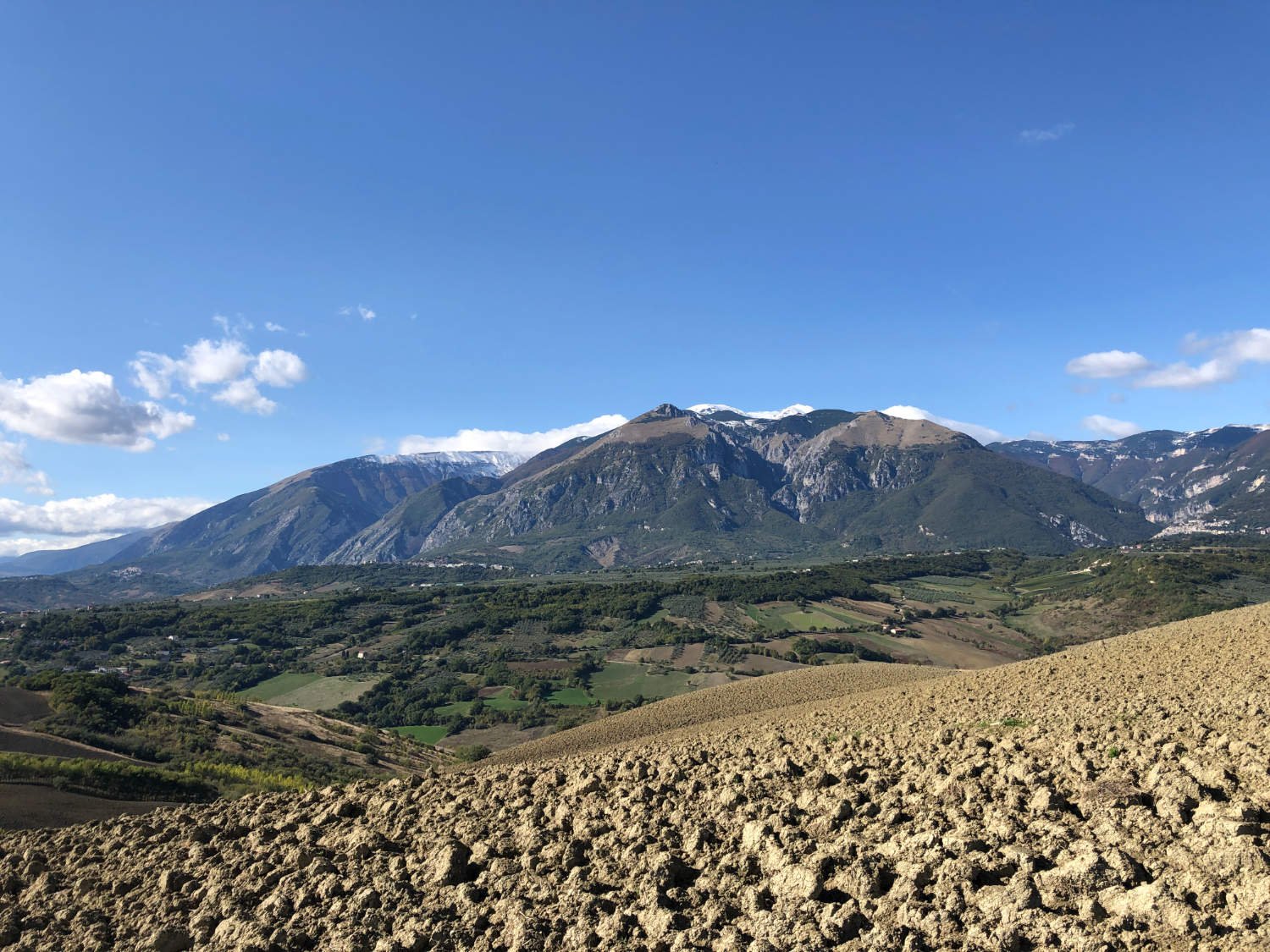A Pasta story
A Pasta story
It is nearing one o’clock and the sky throbs with the blades of a helicopter. Fillipo Antonio de Cecco’s is flying from his factory in the Abruzzi mountains to his villa for his pasta lunch. The world changes, old traditions die and new ones are born, but the Italian ritual of returning home (by foot, bike, car or helicopter) for a pasta lunch, lives on.
Pasta - a paste of hard wheat flour mixed with water and dried
is just another preserved food. ‘Macaroni’ they called it, based, it’s thought, on the Greek word ‘makaria’ meaning ‘food made from barley’. Officially according to state laws, only hard durum wheat can be used to make the pasta, however there are plenty of new artisan pasta makers who are returning to ancient recipes such as Giacomo Santolieri’s Ma’kaira.
The wheat fields of Abruzzo - Ascigno
The province of Abruzzo or more precisely the foothills of the Maiella in its heartland, is perfect pasta making country. The fields provide hard durum wheat, the rivers flowing from Mt. Aquaviva provide mineral rich and very pure water and the air is clean and dry. Through history, the many rivers flowing fast off the massif were used to power the mills to grind the grain. But there was one mill where it was said a superior flour was ground. The mill belonged to two de Cecco brothers, Don Fillippo and Don Nicola.
Ascigno and the Maiella massif
In 1889, after several years of trying Don Fillippo became the first person to develop a device which dried the pasta regardless of the weather. He opened up a ‘pastaficio’ - a pasta factory. By the early years of the twentieth century, the factory had begun to export its products to the United States where it was very successful, largely due to the large numbers of Abruzzese immigrants who had fled the poverty of their native land but who also craved a taste of home.
In 1908 the De Cecco family had developed its famous logo of the Abruzzese woman in her red skirt clutching sheaves of wheat. By the 1990s it was processing 1100 tons of wheat a day, most of it imported from the prairies of America, Canada and Russia. Today, it is the third largest pasta maker in the world. It is still a family- owned business. All twenty shareholders are family members.
The 19th century mill of de Cecco, Fara San Martino
De Cecco pasta is an artisan product made on an industrial scale. Little has changed in the making of the product - durum wheat with its higher protein and density - the waters of the Rio Verde which are always at a constant 15 degrees Celsius and in the drying rooms, the pasta is still dried for between 18 - 36 hours in huge bronze ‘dies’, or drums.
The waters of Aquaviva, which are famed for their purity
The throbbing in the sky intensifies as the helicopter flies directly over the house. It is again time to go back inside, to light the flame under the pentola (pan) and bring the salted water to the boil. Millions of houses across the peninsula will be doing exactly the same routine at this very moment, including that of Fillipo Antonio de Cecco.












